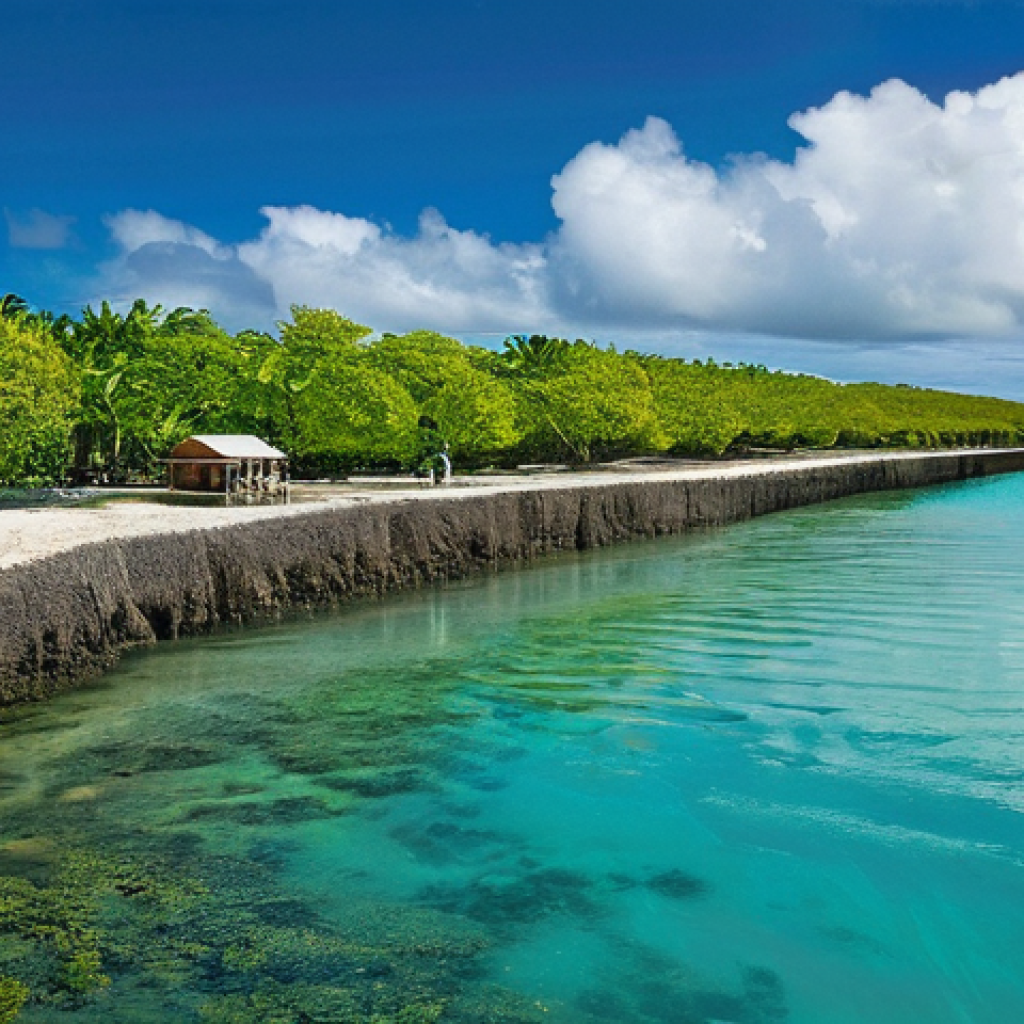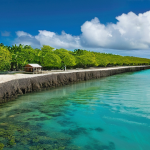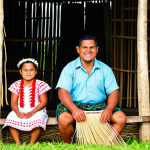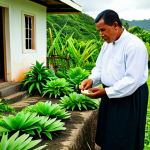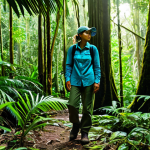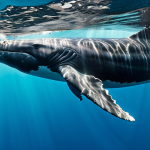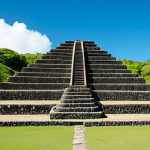Tonga, a stunning archipelago in the Pacific, is on the front lines of climate change. It’s a place I’ve always been fascinated by, not just for its breathtaking beauty, but also for the incredible resilience of its people.
I’ve been diving deep into their strategies for tackling rising sea levels, intensifying tropical cyclones, and the threats to their precious coral reefs and food sources.
It’s clear that this island nation, despite its minimal contribution to global emissions, is stepping up in a big way, with ambitious goals for renewable energy and coastal protection.
The sheer scale of the challenges they face, from saltwater intrusion affecting freshwater to the impact on agriculture and fisheries, is truly daunting.
But what I’ve discovered is an inspiring blend of traditional wisdom and cutting-edge adaptation, driven by a fierce determination to safeguard their future.
They’re not just waiting for help; they’re actively building resilience from the ground up, with community-led initiatives and significant government commitments.
If you’re curious about how a small island nation is setting a powerful example for the rest of the world in the face of an existential threat, then trust me, you’ll want to keep reading.
Let’s delve into Tonga’s innovative climate change strategies and see what truly sets them apart!Tonga, a stunning archipelago in the Pacific, is on the front lines of climate change.
It’s a place I’ve always been fascinated by, not just for its breathtaking beauty, but also for the incredible resilience of its people. I’ve been diving deep into their strategies for tackling rising sea levels, intensifying tropical cyclones, and the threats to their precious coral reefs and food sources.
It’s clear that this island nation, despite its minimal contribution to global emissions, is stepping up in a big way, with ambitious goals for renewable energy and coastal protection.
The sheer scale of the challenges they face, from saltwater intrusion affecting freshwater to the impact on agriculture and fisheries, is truly daunting.
But what I’ve discovered is an inspiring blend of traditional wisdom and cutting-edge adaptation, driven by a fierce determination to safeguard their future.
They’re not just waiting for help; they’re actively building resilience from the ground up, with community-led initiatives and significant government commitments.
If you’re curious about how a small island nation is setting a powerful example for the rest of the world in the face of an existential threat, then trust me, you’ll want to keep reading.
Let’s delve into Tonga’s innovative climate change strategies and see what truly sets them apart!
Guarding the Coastline: Building Resilience Against Rising Tides
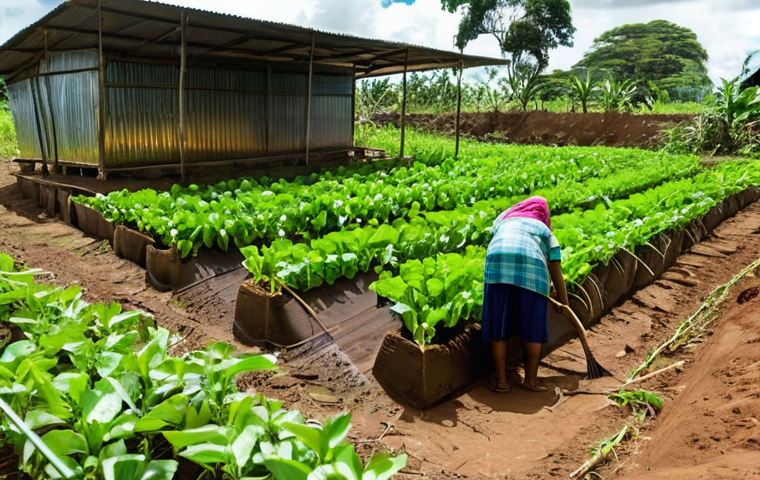
The relentless march of the ocean is perhaps the most visible and immediate threat Tonga faces, and honestly, seeing the coastal erosion firsthand is truly eye-opening.
It’s not just about losing beaches; it’s about homes, livelihoods, and an entire way of life. The Tongan people aren’t just standing by, though. I’ve been so impressed by their proactive approach, combining modern engineering with age-old wisdom.
We’re talking about robust seawalls protecting critical infrastructure and vital villages, built to withstand the increasing force of storm surges. But it’s not all concrete and steel; there’s a beautiful reliance on nature-based solutions too.
Imagine communities working together to plant thousands of mangrove saplings along the shorelines. These aren’t just pretty trees; they’re living barriers, incredibly effective at dissipating wave energy, stabilizing the soil, and even creating crucial habitats for marine life.
It’s a holistic approach that truly respects the delicate balance of their environment. My experience tells me that this blend of grey and green infrastructure is not only more sustainable but also builds a stronger sense of community ownership and pride.
Embracing Nature’s Shield: Mangroves and Coral Restoration
When I visited, I spoke with local conservationists who emphasized the critical role of mangroves, not just for protection, but for the entire ecosystem.
It’s a testament to Tongan foresight that they’re investing heavily in these natural buffers. They’re seeing how mangroves act as nurseries for fish, clean the water, and sequester carbon – an all-around win for both climate resilience and biodiversity.
Beyond the coastlines, the health of their coral reefs is paramount. These vibrant underwater cities are not only tourist attractions but also serve as natural breakwaters, protecting the islands from powerful ocean swells.
Initiatives to restore damaged coral reefs, often involving community divers and marine biologists working side-by-side, are incredibly inspiring. I remember diving near one of these restoration sites; seeing new coral polyps taking hold gave me so much hope.
It’s a race against time, but their dedication to bringing these vital ecosystems back to life is truly commendable.
Strategic Relocation: Tough Choices for a Safer Future
As much as they try to protect their current villages, there are some areas where the sea’s encroachment is simply too severe. This leads to heartbreaking but necessary conversations about strategic relocation.
It’s a decision fraught with emotional ties to ancestral lands, but one that some communities are bravely facing. The Tongan government, along with international partners, is working to identify safer, higher ground for these vulnerable populations, ensuring access to new livelihoods, schools, and essential services.
It’s not just about moving people; it’s about relocating an entire community, preserving their social fabric and cultural identity as much as possible.
I personally found these discussions incredibly poignant, highlighting the deeply human cost of climate change, but also the extraordinary courage of those choosing to adapt for the long term.
Water is Life: Securing Freshwater Resources Amidst Salinity
Freshwater, something many of us take for granted, is a precious and increasingly vulnerable resource in Tonga. With rising sea levels, saltwater intrusion into their groundwater lenses is a huge concern, threatening their drinking water and agricultural viability.
It’s a complex problem, and I’ve seen firsthand how innovative the solutions are becoming. They’re not just hoping for rain; they’re actively catching and storing every drop.
My conversations with local families revealed a deep understanding of water conservation, passed down through generations. They understand that a secure water supply isn’t just about health; it’s about food security and daily survival.
The determination to maintain pure, accessible water sources is palpable, and it drives some truly impressive projects across the archipelago.
Harvesting the Heavens: Rainwater Collection Systems
One of the most widespread and effective strategies I observed was the enhancement of rainwater harvesting systems. Almost every household and public building I saw was equipped with robust tanks and guttering, designed to capture as much rainfall as possible.
This isn’t just about small domestic tanks anymore; larger, community-level storage facilities are being constructed, often with durable materials and smart distribution networks.
It’s a massive undertaking, but absolutely vital. I personally found it fascinating how meticulously they plan for the dry seasons, understanding that every millimeter of rain collected during the wet season makes a significant difference.
It’s a beautiful example of self-reliance and community-wide planning for a sustainable future.
Innovating for Purity: Desalination and Borehole Management
While rainwater harvesting is foundational, it’s not always enough, especially during extended droughts or for larger populations. This is where more advanced technologies come into play.
Tonga is exploring and, in some areas, implementing small-scale desalination plants to supplement their freshwater supplies. It’s an expensive technology, but absolutely critical for long-term water security in certain remote islands.
Equally important is the careful management of existing boreholes, monitoring salinity levels and ensuring that over-extraction doesn’t exacerbate the saltwater intrusion problem.
I learned that there’s a delicate balance to strike, and local water committees play a crucial role in managing these resources sustainably. Their commitment to exploring every avenue for clean water is a testament to their resilience.
Powering Progress: Tonga’s Bold Renewable Energy Transition
Imagine an island nation almost entirely dependent on imported fossil fuels, now charting an ambitious course to switch to renewable energy. That’s Tonga!
It’s a commitment that not only addresses climate change head-on but also makes incredible economic sense by reducing their reliance on volatile global oil prices.
When I think about their vision, I’m genuinely inspired. They’re not just talking about it; they’re actively building the infrastructure, piece by piece, island by island.
The hum of generators being replaced by the silent, powerful work of solar panels and wind turbines is a sound of progress I truly appreciate. This shift isn’t just about sustainability; it’s about energy independence and a stronger, more resilient national economy, which, let’s be honest, is a smart move for any nation.
Harnessing the Sun and Wind: Large-Scale Projects
Driving around the main island of Tongatapu, I couldn’t help but notice the growing number of solar farms. These aren’t just small rooftop installations (though those are plentiful too!); we’re talking about utility-scale projects feeding directly into the national grid.
The sunny Pacific climate is, of course, a huge advantage, and they’re leveraging it brilliantly. There are also ongoing projects to integrate wind power, capturing the consistent breezes that sweep across the islands.
It’s a thoughtful mix of technologies, designed to provide a stable and reliable energy supply. I remember speaking with an engineer who explained the complexities of integrating these intermittent sources into a small island grid – it’s no small feat, but their dedication to making it work is truly admirable.
Exploring Geothermal and Bioenergy Potential
Beyond solar and wind, Tonga is also looking into other intriguing renewable energy sources. There’s significant interest in geothermal energy, tapping into the Earth’s natural heat, particularly given the volcanic nature of some of their islands.
Feasibility studies are underway, and the potential for a consistent, baseload power source from beneath their feet is an exciting prospect. Furthermore, biomass energy, utilizing agricultural waste or dedicated energy crops, is also being explored as a way to convert local resources into power.
It’s this multi-faceted approach, exploring every viable option, that truly sets Tonga apart in its renewable energy journey. They’re leaving no stone unturned in their quest for a clean energy future.
Safeguarding Seas: Protecting Coral Reefs and Fisheries
The ocean is not just around Tonga; it’s intricately woven into the very fabric of Tongan life and culture. For generations, the sea has been their pantry, their highway, and a source of profound spiritual connection.
So, when I learned about the devastating impacts of climate change on their marine ecosystems – particularly coral bleaching and ocean acidification – I understood why protecting these waters is an absolute priority.
It’s not just an environmental issue; it’s a matter of food security, economic stability, and cultural preservation. The resilience I spoke about earlier extends deep into the turquoise waters surrounding the islands, reflecting a passionate commitment to the health of their marine world.
Marine Protected Areas: Sanctuaries for Biodiversity
One of the most effective strategies Tonga is employing is the establishment and expansion of Marine Protected Areas (MPAs). These are designated zones where fishing and other extractive activities are restricted or completely prohibited, allowing marine life to recover and thrive.
I’ve had the privilege of snorkeling in some of these areas, and the difference is truly astonishing – vibrant corals, an abundance of fish, and a palpable sense of health.
These MPAs act as vital nurseries, replenishing fish stocks in surrounding areas and building resilience against the stresses of climate change. It’s a clear demonstration of their understanding that a healthy ocean benefits everyone.
Sustainable Fisheries and Community Management
Beyond MPAs, Tonga is also implementing sustainable fishing practices, often rooted in traditional knowledge but enhanced with modern science. This includes managing fish quotas, regulating gear types, and empowering local communities to take ownership of their fishing grounds.
The idea is to ensure that future generations can continue to rely on the ocean for sustenance. I’ve talked with local fishermen who are incredibly aware of the changes they’re seeing – fewer fish, smaller catches – and they’re actively participating in these new management schemes.
It’s this ground-up engagement, combining scientific advice with practical, local experience, that makes these initiatives so powerful.
| Climate Challenge | Tonga’s Key Strategy | Anticipated Outcome |
|---|---|---|
| Rising Sea Levels & Storm Surges | Coastal protection (seawalls, mangroves) & strategic relocation | Reduced erosion, protected infrastructure, safer communities |
| Freshwater Scarcity & Salinity | Rainwater harvesting, borehole management, desalination | Improved access to potable water, enhanced food security |
| Reliance on Fossil Fuels | Transition to solar, wind, and other renewables | Energy independence, reduced carbon footprint, economic savings |
| Coral Bleaching & Ocean Acidification | Marine Protected Areas (MPAs), coral restoration, sustainable fisheries | Biodiversity preservation, healthy ecosystems, thriving fish stocks |
| Agricultural Vulnerability | Climate-resilient crops, agroforestry, traditional farming | Enhanced food security, reduced crop loss, sustainable land use |
Community Power: Grassroots Adaptation Taking Hold
What truly sets Tonga apart, in my humble opinion, is the incredible spirit of its communities. Climate change adaptation isn’t some top-down directive here; it’s a living, breathing reality that people are tackling every single day, right in their villages and homes.
I’ve witnessed firsthand the power of collective action, often driven by women and elders, who are the custodians of traditional knowledge and the biggest advocates for change.
This isn’t just about government programs; it’s about neighbors helping neighbors, sharing resources, and collectively deciding on the best path forward.
It’s this deep-rooted sense of community, reinforced by their cultural values, that forms the backbone of their resilience.
Empowering Local Councils and Traditional Knowledge
Village and district councils play an absolutely vital role in identifying vulnerabilities and implementing solutions at the local level. They are often the first responders and the primary decision-makers for many adaptation projects.
What’s truly fascinating is how seamlessly traditional ecological knowledge is integrated into these modern strategies. Elders share insights about historical weather patterns, suitable planting times, and natural warning signs – wisdom that has been accumulated over centuries.
I had a conversation with a village chief who explained how they combine satellite weather forecasts with the signs from the ocean and sky, passed down through generations, to prepare for storms.
It’s a powerful blend of old and new, ensuring that solutions are not just effective but also culturally appropriate and sustainable.
Building Local Capacity and Resilience Funds
Investing in local capacity building is another cornerstone of Tonga’s grassroots approach. This means training community members in everything from disaster preparedness and early warning systems to sustainable agriculture techniques and coastal protection methods.
It’s about empowering people with the skills they need to adapt and respond to changing conditions. Furthermore, initiatives to establish local “resilience funds” are gaining traction, allowing communities to pool resources and invest in their own adaptation projects, fostering a sense of ownership and self-determination.
I saw how this approach genuinely instills confidence and creates active participants in their own future, rather than passive recipients of aid.
Cultivating Climate-Smart Solutions: Agriculture and Food Security
For a nation where agriculture and fisheries are central to livelihoods, the impacts of changing rainfall patterns, saltwater intrusion, and more intense storms are profound.
It’s not just about what they eat; it’s about their heritage, their economy, and their independence. This is why Tonga is putting immense effort into transforming its agricultural sector to be more resilient to climate shocks.
My conversations with farmers revealed their deep connection to the land, but also their pragmatism in adapting to new realities. They understand that what worked for their grandparents might not work today, prompting a blend of traditional farming wisdom with cutting-edge, climate-smart practices.
Embracing Drought-Resistant Crops and Agroforestry
One of the most immediate and impactful strategies is the promotion of drought-resistant and salt-tolerant crop varieties. Farmers are experimenting with different root crops, vegetables, and fruit trees that can better withstand the harsher conditions.
It’s about diversifying what they grow to ensure food security even when one crop fails. I visited a farm that was experimenting with a particular type of taro that could handle higher salinity levels, a truly ingenious adaptation.
Beyond individual crops, agroforestry – integrating trees with crops and livestock – is gaining significant traction. These systems provide shade, improve soil health, prevent erosion, and offer additional food sources, creating a much more resilient and sustainable agricultural landscape.
It’s a win-win for both the environment and the farmers’ bottom line.
Protecting Food Sovereignty: Traditional Practices and Modern Innovation
Tongan food sovereignty is deeply tied to their ability to grow their own food. This involves not only adapting what they plant but also how they plant it.
Traditional organic farming methods, which inherently build soil health and resilience, are being revitalized and combined with modern sustainable practices.
There’s a strong emphasis on reducing reliance on imported foods and fostering local production. I learned about initiatives to create community gardens and promote home gardening, empowering families to grow a significant portion of their own food.
This focus on local production not only strengthens food security but also reinforces cultural identity and promotes healthier eating habits. It’s a holistic approach to ensuring that their pantries remain full, come what may.
Global Lessons from a Small Island Nation
It’s easy to dismiss a small island nation like Tonga as just another victim of global climate change. But what I’ve discovered, and what I hope you’re sensing too, is that they are so much more than that.
They are pioneers, innovators, and incredibly resilient people charting a course for survival and thriving in the face of an existential threat. Their strategies, while tailored to their unique context, offer profound lessons for the rest of the world, including larger, more industrialized nations.
My journey into understanding Tonga’s climate actions has been genuinely transformative, shifting my perspective on what’s possible when determination meets necessity.
They are not just adapting; they are leading, demonstrating a powerful blend of cultural wisdom, scientific innovation, and community spirit.
Advocacy and International Partnerships: Amplifying a Powerful Voice
Despite their small size, Tonga’s voice on the international stage is anything but small. They are fierce advocates for greater climate action from developed nations, consistently pushing for stronger emissions reductions and increased climate finance.
Their leaders are articulate and passionate, sharing their lived experiences and the urgency of their situation at global forums. This advocacy is crucial because while Tonga is doing everything it can, the ultimate solution requires global cooperation.
Furthermore, their success in implementing many of these strategies relies heavily on strong international partnerships, working with organizations and countries that provide technical expertise, funding, and support.
It’s a powerful reminder that climate action is a shared responsibility, and that the most vulnerable nations often hold the keys to innovative solutions.
Innovation Born of Necessity: A Blueprint for the Future
What truly fascinates me is how necessity has become the mother of invention in Tonga. They are taking traditional knowledge, blending it with cutting-edge science, and applying it with an urgency that many larger nations have yet to fully grasp.
The integrated nature of their strategies – coastal protection linking to marine health, water security to food security, and renewable energy to economic independence – offers a comprehensive blueprint.
It’s not just about one-off projects; it’s about systemic change. I truly believe that if we, as a global community, pay close attention to what Tonga and other small island developing states are doing, we will find many of the practical, scalable solutions needed to address our shared climate crisis.
Their journey is a powerful narrative of hope, resilience, and the enduring human spirit in the face of monumental challenges.
Wrapping Up Our Journey
It’s truly incredible, isn’t it? My time delving into Tonga’s climate resilience has been nothing short of inspiring. What I’ve seen and heard confirms my belief that even in the face of immense challenges, human ingenuity, combined with deep cultural wisdom, can chart a path forward.
Tonga isn’t just surviving; it’s actively thriving and innovating, offering a powerful blueprint for how small island nations, and indeed the entire world, can confront the realities of a changing climate.
It’s a story of hope, determination, and the unwavering spirit of a people dedicated to protecting their home for generations to come.
Useful Information to Know
1. Nature-Based Solutions are Key: We often think of large-scale engineering, but Tonga beautifully demonstrates how natural ecosystems like mangroves and healthy coral reefs are incredibly effective, and often more sustainable, first lines of defense against rising seas and storm surges. Supporting their preservation and restoration is a global imperative.
2. Community is the Core of Resilience: Climate adaptation isn’t just about government policies; it thrives at the grassroots level. Tonga showcases how empowering local communities, integrating traditional knowledge, and fostering collective action are fundamental to developing robust and culturally appropriate solutions that truly last.
3. Renewable Energy is the Future (Now): Tonga’s ambitious shift towards solar, wind, and potentially geothermal energy isn’t just good for the planet; it’s a smart economic move. Reducing reliance on imported fossil fuels boosts energy independence and frees up resources for other vital development, proving that green energy is a win-win.
4. Water Security is Paramount: For any island nation, securing freshwater resources against saltwater intrusion and drought is critical. Tonga’s focus on rainwater harvesting, careful borehole management, and even desalination offers practical, scalable lessons for regions worldwide facing increasing water stress. Every drop truly counts.
5. Our Actions Matter, Globally and Locally: While Tonga is doing its part, the scale of climate change demands global action. We can support these efforts by reducing our own carbon footprint, advocating for stronger climate policies, and choosing sustainable travel options that positively impact local economies and conservation efforts in vulnerable regions.
Key Takeaways
* Integrated Approach: Tonga’s success lies in its holistic strategy, blending coastal protection with marine conservation, water security with food security, and renewable energy with economic independence.
* Community-Led Adaptation: The power of local engagement and the integration of traditional ecological knowledge are fundamental drivers of effective and sustainable climate resilience.
* Innovation from Necessity: Faced with existential threats, Tonga is pioneering practical, scalable solutions – from nature-based defenses to advanced renewable energy systems – offering a valuable model for global climate action.
* Advocacy and Partnerships: Despite its size, Tonga amplifies a crucial voice on the international stage, underscoring the need for global cooperation, increased climate finance, and shared responsibility in tackling the climate crisis.
Frequently Asked Questions (FAQ) 📖
Q: What are the biggest climate change challenges Tonga is currently grappling with, and how are these impacting daily life?
A: Oh, my goodness, if you’ve been following my journey, you’ll know that Tonga is truly on the front lines of climate change, and the challenges they face are pretty intense.
When I dug into their situation, it became incredibly clear how much their daily lives are affected. First and foremost, rising sea levels are a huge, existential threat.
Imagine your ancestral home, your village, literally being swallowed by the ocean – that’s the reality for many low-lying coastal communities. This isn’t just about losing land; it leads to saltwater intruding into precious freshwater sources, making it harder to access clean drinking water and impacting agricultural land.
I’ve seen how difficult it is to grow crops when the soil is increasingly saline. Then, we have the intensifying tropical cyclones. We’re not talking about mild storms here; these are powerful, destructive forces like Tropical Cyclone Gita in 2018 or Harold in 2020 that can wipe out infrastructure, homes, and entire harvests in a single blow.
It’s heartbreaking to hear about the economic losses and the sheer effort required for communities to rebuild after each one. Beyond the immediate destruction, these extreme weather events contribute to severe coastal erosion, steadily eating away at their beautiful shores and vital ecosystems like coral reefs and mangroves.
And trust me, these reefs aren’t just pretty; they’re critical for marine life, which is a primary food source and economic pillar for many Tongans. So, you see, it’s a cascade of interconnected problems that really test the resilience of their people and their traditional way of life every single day.
Q: Beyond just identifying the problems, what innovative strategies is Tonga actually putting into action to build resilience?
A: This is where Tonga truly shines and, honestly, where I get so inspired! They’re not just waiting for external help; they’re actively implementing a fascinating blend of traditional wisdom and modern innovation to fight back.
One of the most visible strategies is coastal protection. They’re building robust sea defenses, like coral revetments and groynes, and also embracing nature-based solutions like extensive mangrove planting to create natural buffers against rising tides and storm surges.
It’s a smart move because mangroves don’t just protect the coast; they also restore crucial habitats for marine life. On the energy front, Tonga has some incredibly ambitious goals.
They’re aiming for 70% renewable energy by 2030 and a whopping 100% by 2035!. I’ve seen projects focusing on solar and wind power, with efforts to install utility-scale battery storage systems to stabilize their grids, especially on the main island, and even green mini-grids for the outer islands.
This transition not only reduces their carbon footprint but also makes their energy supply more resilient to external shocks and climate-related disruptions.
What really struck me is their integrated approach, laid out in their Joint National Action Plans (JNAP and JNAP2). This isn’t just top-down; it involves strong community-led initiatives, where local voices guide projects, whether it’s diversifying agriculture with salt-tolerant crops, improving water collection systems through more rainwater tanks, or protecting fisheries.
They’re also integrating climate risk information into local development planning, ensuring that every new step they take is climate-smart. It’s a testament to their fierce determination to safeguard their future, combining scientific expertise with their deep-rooted cultural values of caring for the land and sea.
Q: From your perspective, what lessons can the rest of the world learn from Tonga’s approach to climate change adaptation?
A: Having immersed myself in Tonga’s journey, my biggest takeaway is this: their approach offers profound lessons for the entire world, not just other small island nations.
First, their proactive resilience building is simply exemplary. Despite being a tiny nation with minimal contribution to global emissions, they’re taking massive strides to adapt and mitigate.
It’s a powerful message that every nation, regardless of size or contribution to the problem, has a responsibility to act. They’re not waiting for others to solve their problems, which is truly inspiring.
Second, the integration of traditional wisdom with modern solutions is a masterclass in holistic adaptation. They recognize the invaluable ecological knowledge passed down through generations – practices like agroforestry, sustainable fishing, and respecting natural ecosystems – and are blending it seamlessly with cutting-edge science and technology.
This isn’t just about building sea walls; it’s about understanding the land, the sea, and their interconnectedness in a way that only generations of living in harmony with nature can teach.
This blend creates solutions that are not only effective but also culturally relevant and sustainable. Finally, their community-centered approach is absolutely vital.
Instead of imposing solutions, they empower local communities to identify their own vulnerabilities and co-create solutions through participatory planning.
This fosters a sense of ownership, ensures relevance, and builds robust, grassroots resilience. It’s a reminder that climate action isn’t just about grand policies; it’s about people, their livelihoods, and their inherent connection to their environment.
For me, seeing their unwavering spirit and innovative strategies truly reinforces that even in the face of daunting challenges, collective human ingenuity and determination can create a path forward.
We could all learn a thing or two from Tonga’s incredible courage and wisdom.
📚 References
Wikipedia Encyclopedia
구글 검색 결과
구글 검색 결과
구글 검색 결과
구글 검색 결과
구글 검색 결과
